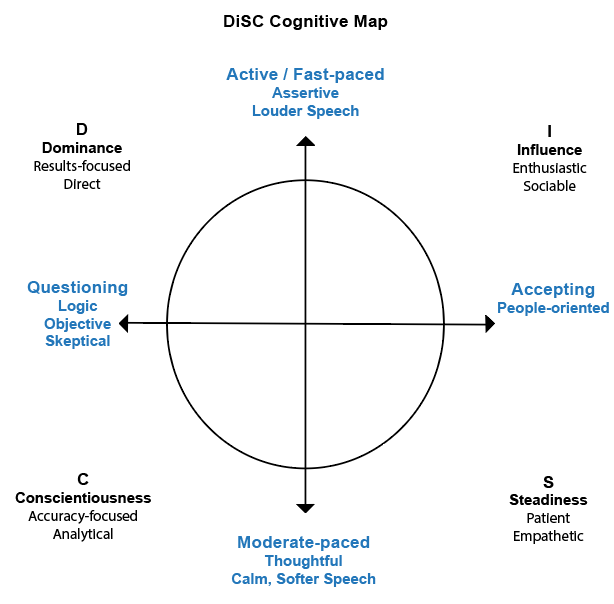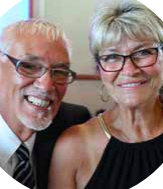
By Jessica Kirby
Reprinted with permission from the September 2018 issue of Partners in Progress magazine. Visit www.pinp.org for more information.
Today’s construction professionals have far more than their projects to contend with when developing a solid and productive workplace culture. The entire Western hemisphere is experiencing an unprecedented demographic shift that leaves leaders managing generations that span decades, each with defining personalities, perspectives, and work ethic. The days of one-size-fits-all management are clearly over.
Today’s construction industry is diverse, challenging, creative, and ripe with opportunity. Globalization has opened up mobility and information sharing to the extent that seemingly basic skills like communication can no longer be natural or practiced without intent. Instead, communication becomes an active, strategic tool, fine-tuned to create results and, most importantly, mitigate conflict.
Traditionalists and Baby Boomers bring long-standing, pioneering knowledge to the construction industry and represent a fifth of the workforce whose knowledge we will struggle to replace as they retire over the next decade. Generation X/Y is the bridge generation, still willing to take accountability for their mistakes, but with a keen eye on technology, and, of course, Millennials have turned the workplace landscape on its head, valuing work-life balance, creativity, collaboration, and attention almost as much as the technology that seems permanently attached to their fingertips. Can the generations, with their differences and shared values, come together in the workplace and become mutually binding strands in the fabric that holds a company together?
Stephane McShane, author and teacher with Maxim Consulting Group, says they can, but with these broad generational gaps comes conflict that appears to manifest as cultural or personality differences. More often, however, the problem lies in varying expectations and styles of communication.
“We provide leadership to three or more generations with differing personalities and perspectives,” McShane says. “While we understand that there are significant differences in these generations, it is critical that labor and management representatives understand how to assess their own communication styles, as well as those they work with, for all to succeed.”
It is easy to take communication for granted—we speak, write, text, call, and meet face to face, conveying ideas that are important to us without any real commitment to how we get our message out. This, says McShane, is one of the most important components of communication—the “how” rather than the “what” of our message, and it is critical we start by evaluating our own styles of communication.
“Until we understand our own communication style, we cannot: 1. Know how our style affects our interaction with others; or, 2. Understand how to change the way in which we communicate in order to most effectively send the message in the way that the recipient needs to hear it,” she says.
Step one in redefining the efficacy of our communication is identifying the challenges, both in our own communication styles and in others’, and putting in place an effective improvement program that establishes meaningful communication for the entire team.
“The power of having roles and responsibilities defined creates the ability to have focused, positive interaction between the ‘silos’ that exist within construction operations,” says McShane. “The grey areas that are created by every person doing their job differently, along with deliverables not being standardized or expectations made clear, create conflict. The good news is that these communication challenges can be solved, and a smoother workflow, and more importantly, culture, will result.”
According to McShane, communication is one way leaders execute the immense power granted to them by their organizations. Poor leaders will abuse this power for their own benefit, while strong leaders will use it to inspire others to greatness.
“People stand with leaders who stand with them,” McShane says. “Leadership leads to trust, which in turn garners respect.”
Great leaders use their power to set direction among their companies, tie actions to the bigger picture, and communicate the “why” of corporate vision and strategy. They use their influence to align resources, leveraging the company and workforce’s strengths to create meaningful benefit and create ownership among staff. Great leaders can’t help but motivate others when they take the time and focus required to know them deeply, provide encouragement, and understand their intrinsic and material needs.
“There is a huge difference between someone using power as a weapon, and someone who uses their influence to raise the performance and engagement of their team,” says McShane. “Good communication is the core to this, but the focus must be on bettering others, not on what it does for ‘me’.”
Addressing generation gaps is the foremost important issue facing communication today. In her presentation, McShane gives the example of how different generations of employees respond when something goes wrong when the employee is to blame:
Traditionalist: “Sir, I made a mistake.”
Baby Boomer: “Totally my fault.”
Generation X: “My bad.”
Millennial: “Didn’t you read my tweet?”
Although meant as a humorous poke at generational differences, it points to a key aspect of effective communication leadership: know your audience. Understanding the changes that occurred between the hard-working, authority-respecting traditionalists and the technology-obsessed, dress-code-shunning millennials will help shape communication leadership across all industry sectors.
In her presentation, McShane uses a simple, four-factor cognitive map called DiSC for understanding and managing behaviour—our own and that of others. It is a mental model uses for identifying and quantifying differences, and for developing strategic and effective solutions to character clashes.

DiSC identifies the defining characteristics of particular communication styles—dominance, influence, compliance, or steadiness. Each style is associated with specific personality traits, the understanding of which allow others to predict the kind of communication an individual will use and respond to.
How can you be sure just what type of person you are dealing with? McShane recommends watching for clues: Does the person take charge of the conversation? Refuse to waste time on small talk? Want to get to the point or get results quickly? You are probably dealing with a person who runs on dominance. If the person dresses smart, reaches out, warmly shakes your hand and smiles, and expects small talk, preferably over lunch or drinks, you are probably dealing with an influencer.
“DiSC is just one of many great evaluation tools available in the market to allow a person to first learn more about the intrinsic communication talents they possess, along with the challenges that their particular profile may have,” says McShane. “In addition, it allows insight into the communication styles of others so that, using this form of emotional intelligence, we can pave the path to stellar communication.”
No matter who we work or communicate with, everyone deserves fairness, clarity, and honesty in our communications. More important than what we say is how we listen—listening well might be practical, but it also sets the tone for the other party feeling acknowledged and respected. This state of mutual respect breeds trust, the most important value of all.
“At the cornerstone of all relationships is trust,” says McShane. “With trust comes openness, positivity, and a culture that fosters growth. There must be an intrinsic understanding of reliance on each other for all of the team to succeed. t isn’t about labor vs. management, leadership vs. staff, or anything of this sort. It’s all about creating aligned vision, creating positive culture, building trust, praising good work, and solving challenges as a team.”
Stephane McShane began her career in the field as an apprentice, electrician, and foreman, and worked her way through each operational chair within a successful electrical construction firm. This experience and talent are what make her effective at operational and organizational assessments in todays construction industry. Learn more at www.maximconsulting.com. •
Effective Communication Techniques
McShane suggests eight points to remember in effective communication techniques for the 21st Century:
- Communication is more than putting thoughts into words
- Listen for the intonations
- The body doesn’t lie
- Perception is reality
- How things are said is very important
- Actions do speak louder than words
- The key ingredient of effective communication is trust
- Don’t judge a book by its cover
“Remember to always listen, listen, listen,” McShane says. “Together we thrive; apart we suffer.”



